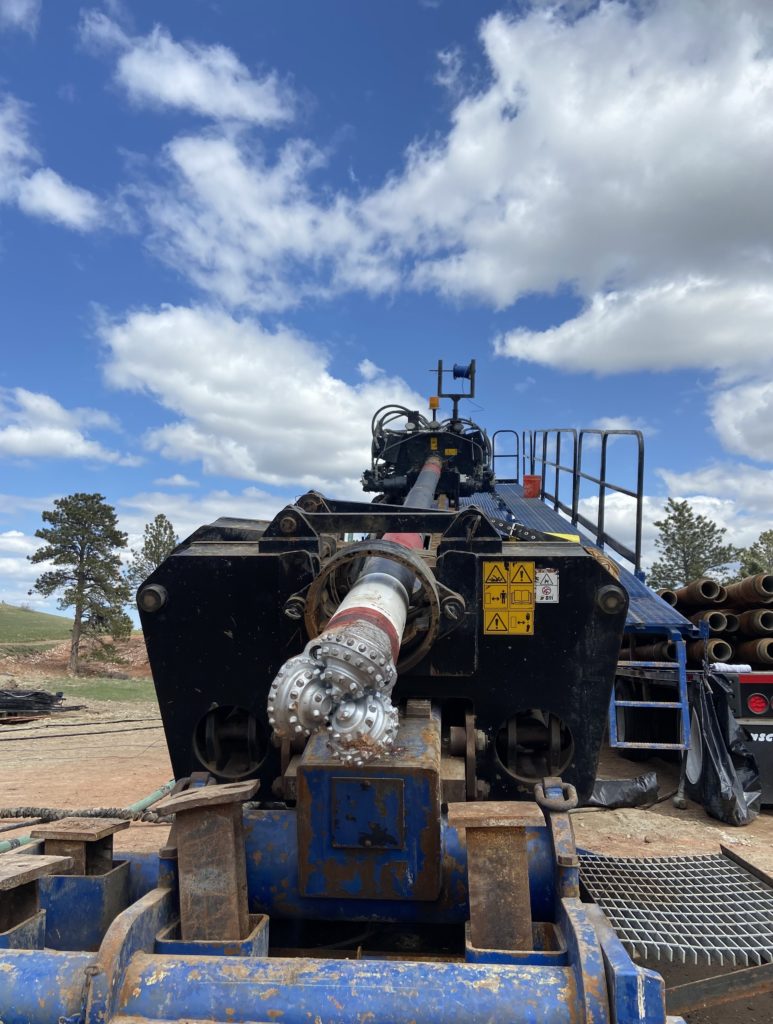Coal Ash Project Enters Another Phase
Ellingson crews are currently completing the installation of three horizontal capture wells at a coal fire power plant in the western US. These capture wells will work with previously installed horizontal wells to mitigate potential off-site migration from coal ash impoundments at the site.
The total bore lengths measure between approximately 1,300 feet and 2,000 feet. Well construction materials consist of 4” plastic well materials with screen lengths ranging from 840 feet to 1,200 feet. The crews are installing the wells in a single-ended configuration (terminating below ground surface).

Setting up to drill the pilot bore for a horizontal well at a coal ash impoundment.
Crews are using a combination of dilling techniques with a large maxi rig to install the wells. Rock formations require the use of a mud motor and rock bit for the pilot bores. The steering system involves navigation using a wireline magnetic steering tool. Although we expect the rock formation to hold open for well construction, the project team has a back up plan. If they encounter unconsolidated portions of the formation, crews will install well materials “through-rod,” utilizing our patented “Knock-off” tooling technology.
Coal Ash Impoundment Surrounded by Tough Geology
One of the primary challenges of this site is the presence of an unconsolidated clinker formation in the upper portions of the bores. This formation presents several potential problems including the inability to maintain return flow and maintain a stable borehole. However, the primary concern is the potential for cross-communication between impacted and non-impacted stratigraphic layers.
To address this issue of cross-contamination, crews plan to install large diameter steel surface casing. The conductor casing will span from ground surface, through the unconsolidated clinker formation, and into the competent underlying rock formation. This preventative measure will seal and isolate the zones of concern. In order to form a complete seal around the steel casing, field personnel force a cementitious grout through the inside of the casing, out the bottom and up into the annular space. Once the grout cures, drilling then resumes through the casing. This approach offers the benefit of maintaining drilling fluid returns despite the clinker’s porous nature. But more importantly it also eliminates the risk of cross-communication between subsurface zones.
While these projects have presented unique challenges they also have provided the opportunity to further develop methods specific to the increasingly growing coal ash market resulting in viable alternative solutions for these types of sites.
Tags: coal ash, conductor casing, horizontal wells, hydraulic control, magnetic steering, mud motor